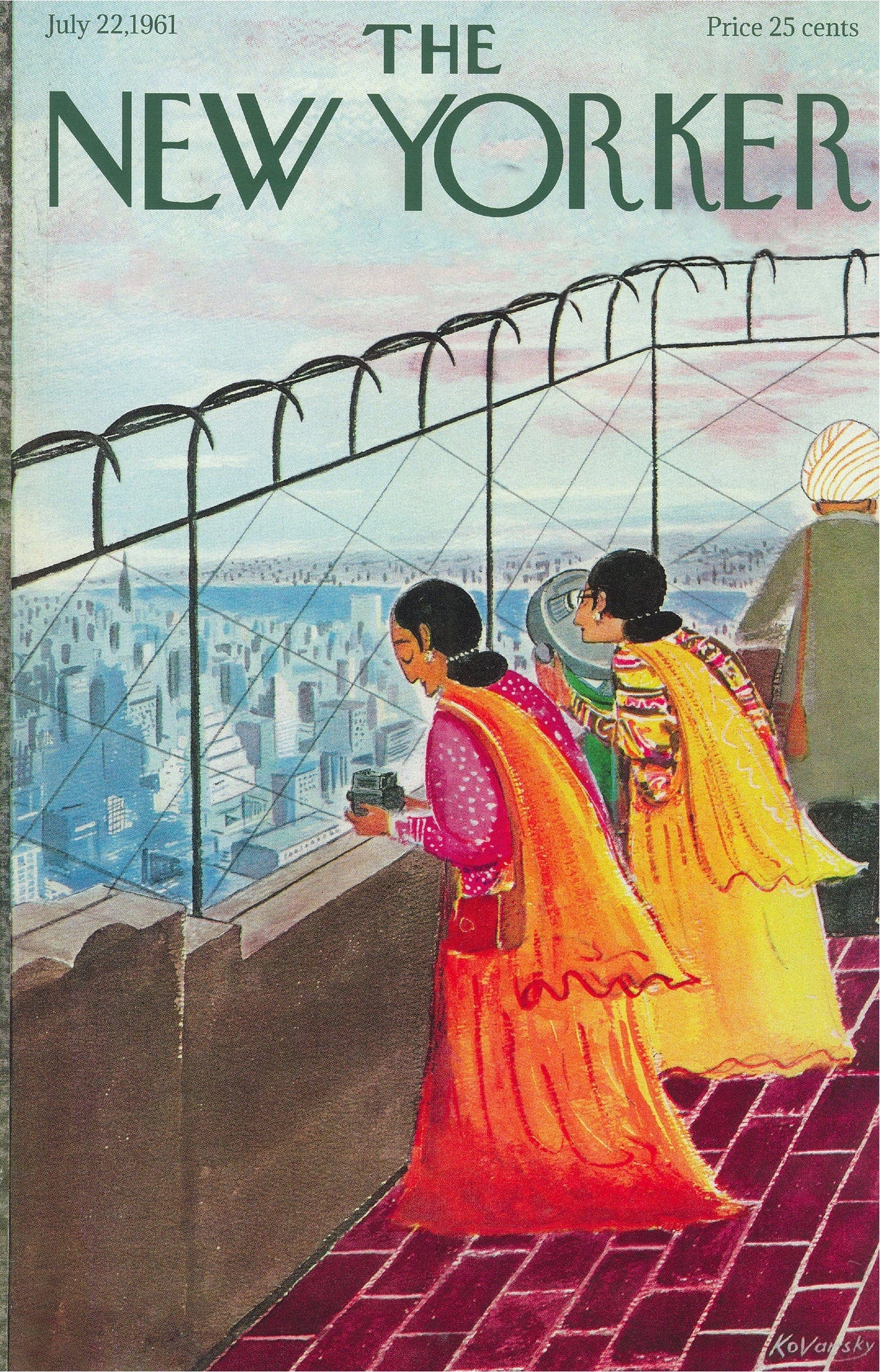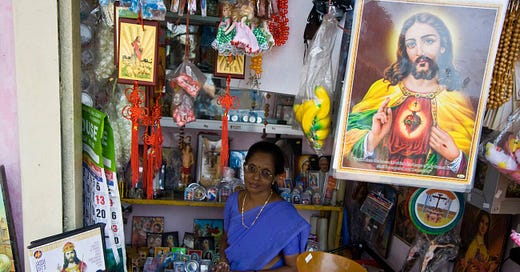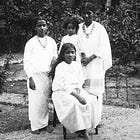Welcome to the Brown History Newsletter. If you’re enjoying this labour of love, please do consider becoming a paid subscriber. Your contribution would help pay the writers and illustrators and support this weekly publication. If you like to submit a writing piece, please send me a pitch by email at brownhistory1947@gmail.com.
Don’t forget to check out our SHOP and our Podcast.

Recommended Reads/Listens:
How Indian Catholics Became Experts in Kitsch and Clutter
Tracing the story of faith, class, and colonial legacies through the Indian Catholic community’s hearty, maximalist aesthetics.
For the Rebello-Agnes family and all their children.
“I’m not wearing that,” I had declared once—no more than eight years old—my nose crinkled snootily at a pink tulle frock my mother had laid out for me. “I’m going to look like one of those girls at mass with the puffy sleeves and knee length skirts.” This was not an uncommon domestic scene. In this pre-cancel culture era, I would make similarly caustic observations at someone’s expense, and my parents would laugh a tad too loud.
Their inter-religious marriage–its peculiar secularism, doused in Western subtlety and snobbery–ensured that my siblings and I could only ever grow at the fringes of our extended families, never within them.
My mother’s side, Mangalorean Catholic and closer in proximity, provided ripe material for me, a fly on the wall, dangling palm-sized Mary Janes from the drawing room couch— shy and judgemental in equal parts. I fancied myself as someone with refined sensibilities and I found that religion made people tacky. Easter visits to Bombay’s vivacious Everard Nagar, and Pune’s aging Bund Garden Road were sensorially shocking for a little girl whose house prided itself on “good taste.”
Stock images of fruits and vegetables printed on waterproof PVC table mats; fake flowers collecting dust in garish vases atop crochet doilies; dull granular tiles lazily camouflaging dirt and stray hair; walls plastered with devotional images of Jesus and Mary—rosy cheeks, glowing halos, and piercing, otherworldly gazes—all flanked by sepia portraits of our foremothers with stern expressions. It was a riot of pattern and nostalgia that I wasn’t ‘inner circle’ nor mature enough to understand. One that, had I known the word back then, I’d have cruelly dismissed as kitsch. ‘OTT’, as my father would say.
Kitsch is…complicated, and Indian Catholic Kitsch even more so.







